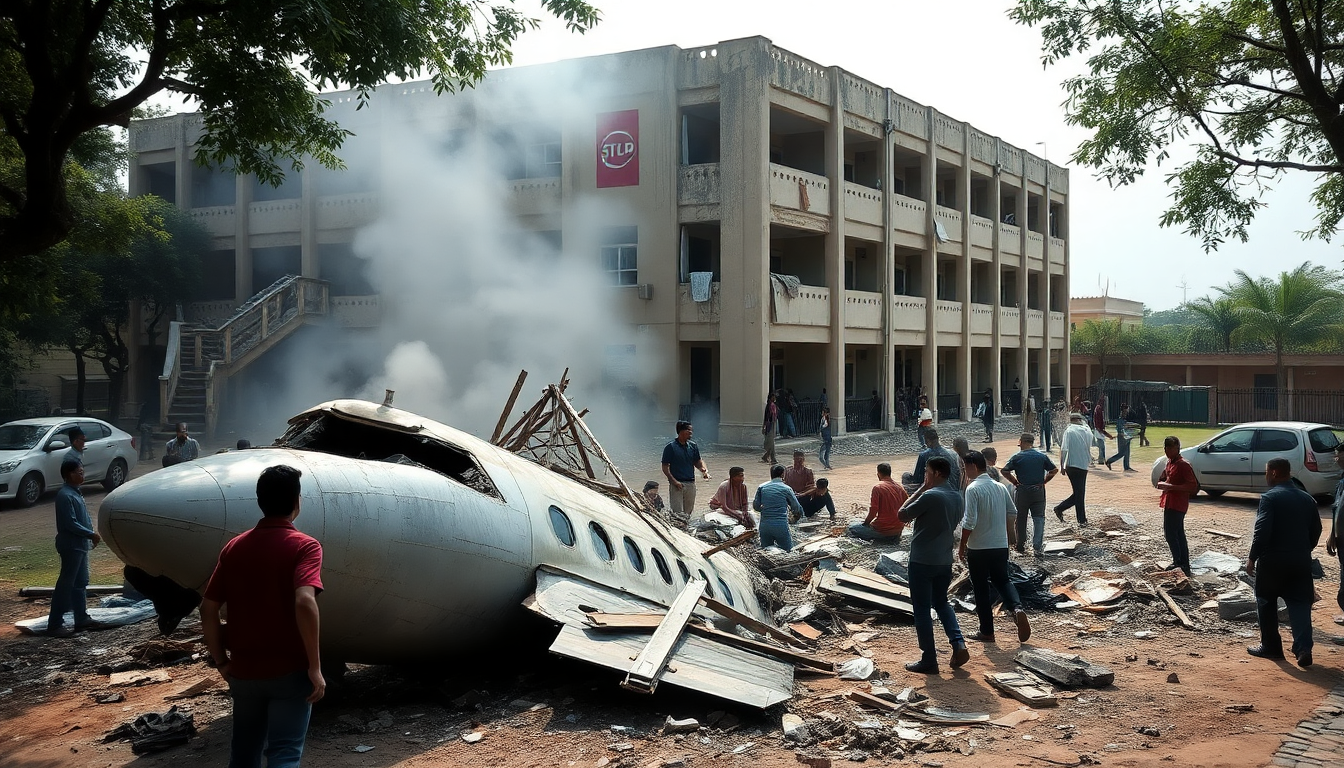Table of Contents
The recent crash of a Bangladesh Air Force training aircraft into a school campus in Dhaka has sent shockwaves throughout the nation. With at least 19 lives lost and over 50 people injured, this catastrophic event highlights an urgent need for stricter safety protocols surrounding flight operations in urban areas—especially when schools are in session.
The Incident and Immediate Aftermath
On that fateful afternoon, an F-7 BGI aircraft descended upon Milestone School and College in the Uttara neighborhood of Dhaka. Eyewitnesses reported that the aircraft struck around 1 PM local time, creating a scene of chaos and devastation. Can you imagine the horror? Flames and thick plumes of smoke filled the sky as students, teachers, and parents scrambled for safety.
Emergency responders arrived quickly, working tirelessly to extinguish the flames and assist the injured. Many victims suffered from severe burns and trauma, and they were rushed to the National Institute of Burn and Plastic Surgery for urgent medical care. It’s heartbreaking to hear accounts from Bidhan Sarker, head of the burn unit, revealing that among the deceased was a third-grade student, along with several others who were hospitalized.
Social media captured the anguish of those present, with videos revealing distraught parents and students searching desperately for their loved ones amidst the wreckage. The emotional toll of this tragedy cannot be understated, as families grapple with the loss of life and the injuries sustained by many.
Official Response and Investigation
In the wake of this disaster, Muhammad Yunus, head of the interim government in Bangladesh, expressed deep condolences for the victims and their families. He assured the public that a thorough investigation would be launched to determine the cause of the accident, emphasizing the importance of providing necessary assistance to those affected. An emergency hotline has been established at the National Institute of Burn and Plastic Surgery to facilitate support for victims and their families.
The Bangladesh Red Crescent Society has also stepped forward, appealing for donations to aid those injured in the crash. This incident underlines the critical importance of emergency preparedness and response, particularly in densely populated areas where schools are located.
As investigations continue, the government faces the challenging task of evaluating flight protocols and safety measures to prevent such tragedies from recurring. After all, ensuring the safety of citizens—especially children in educational settings—must be a priority moving forward.
Historical Context and Broader Implications
This tragic event echoes previous aviation disasters in the region, such as a recent incident in India where an Air India plane crashed, leading to significant loss of life both on board and on the ground. Such occurrences raise important questions about aviation safety standards and emergency response capabilities in South Asia.
As the nation mourns the lives lost in Dhaka, it serves as a stark reminder of the fragile nature of safety in both aviation and public spaces. It’s essential for authorities to review and enhance safety regulations and protocols to protect against future incidents.
In conclusion, the crash in Dhaka has not only taken precious lives but has also sparked a national conversation about safety and preparedness in the face of unforeseen tragedies. The road to recovery for the victims and their families will be long, and it’s vital that the community comes together to provide support during this difficult time.


